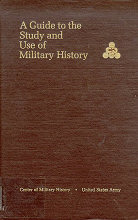
JESSUP – COAKLEY : A guide to the use of military history (előszó)
OVER the years the study of military history has had its ups and downs within the Army. In the education of the World War II generation of military leaders it played an important part, for the study of past operations held a preeminent place in the Army schools' curricula in the period between the two great world wars. In the years immediately following World War II, it lost that place. This happened partly because the information explosion broadened so greatly the areas in which an officer had to be knowledgeable and partly because of a belief that the pace of change in technology had rendered the study of past experience irrelevant. In the Army's higher schools, military history became largely a matter of using examples from the past in courses dealing with current problems.
On his retirement in 1970 as Chief of Military History, Brig. Gen. Hal C. Pattison voiced his concern to the Army Chief of Staff, General William C. Westmoreland, over "the departure of the Army from its traditional reliance upon the experience of history." General Pattison suggested that the Army had paid the price of this neglect in many of the problems it encountered in the late 1960s and urged the restoration of military history to "its proper place in the importance of things." In response General Westmoreland established an ad hoc committee to "ascertain the Army need for the study of military history" and to "develop recommendations on how any unfulfilled needs can be met." Under the chairmanship of Col. Thomas E. Griess of the U.S. Military Academy and composed of representatives of the higher Army schools, the Continental Army Command, and the Office of the Chief of Military History, the committee met over an extended period at West Point in 1971. The committee concluded that there was indeed a need for study of military history in the Army to contribute to "broadened perspective, sharpened judgment, increased perceptivity, and professional expertise." It included in its recommendations to meet "unfulfilled needs" the publication of a "guide to the study and use of military history" which would be "issued to all officers at the Basic Course and others on request." The Chief of Staff approved this recommendation, entrusted the preparabon to the then Office of the Chief of Military History (now Center of Military History), and this Guide is the result.
As recommended by the ad hoc committee, the primary audience is the young officer just entering upon a military career. But the Guide has been shaped for use throughout that career as he matures and progresses, not as something to be thrown aside after one reading. It should serve the officer in the advanced courses, the Command and General Staff College, and the Army War College, as well as those in basic courses. Perhaps more important, since the time Army schools can allot to military history is limited, it can serve as a most useful tool for self education at any stage of an officer's career. It should also be of value to instructors in all Army schools and to noncommissioned officers and other enlisted personnel with an interest in the military past. Civilian students and instructors in history, and indeed all those interested in military affairs, should find much of interest and value in this volume. In sum, the Guide should become an important tool in the never-ending process of education of both Army officers and civilian students of history. I hope that it will indeed assist in restoring military history to its "proper place in the importance of things."
James L. Collins, Jr.
Brigadier General, USA
Chief of Military History